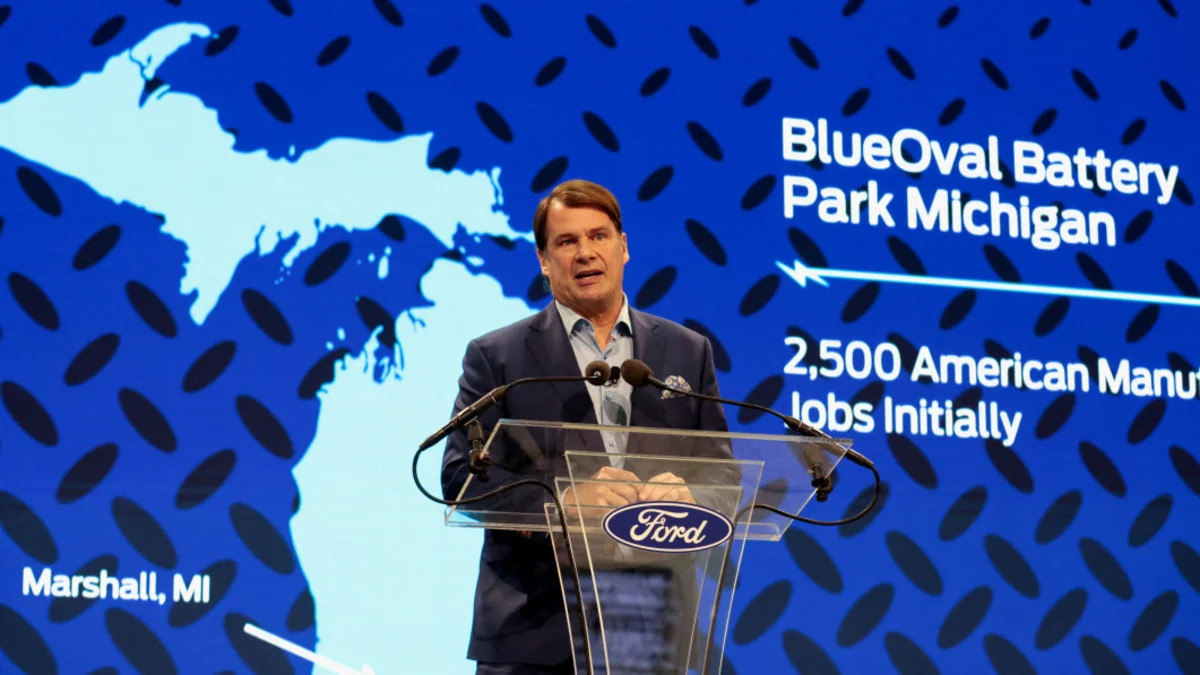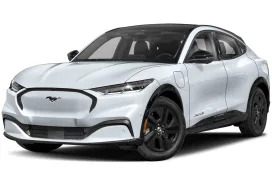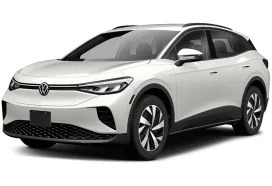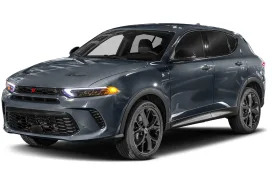For executives on both sides of the Pacific, Ford Motor Co.’s controversial deal to build a $3.5 billion electric-vehicle battery plant in Michigan using Chinese technology was the finale of a high-wire act that began two years ago.
When Ford and China’s Contemporary Amperex Technology Co. Ltd first began talking in early 2021 about building batteries together in North America, a political firestorm seemed like a distant prospect, according to people familiar with the negotiations. That soon changed.
U.S. House Speaker Nancy Pelosi’s trip to Taiwan last year kicked off a diplomatic clash that caused a delay in announcing the plant. An escalating trade war didn’t help matters. Now, the pact is drawing scrutiny from government officials in the U.S. and China as an alleged spy balloon inflames tensions between the two countries.
But the deal’s carefully negotiated framework — Ford will own and operate the plant, while CATL will license its technology without taking an equity stake — provides a blueprint for Chinese companies seeking to profit from America’s rush into battery power, and possibly for other U.S. automakers looking to boost EV output.
Navigating geopolitical disputes will be crucial as century-old carmakers like Ford and General Motors scramble to catch up with Tesla. In the fast-growing market for plug-in vehicles, batteries have become a key battleground — and Ford and its rivals need China’s technology. Just two Chinese companies — Tesla supplier CATL and rival BYD — account for more than half of the world’s EV battery production.
“The deal has already set a precedent,” Tu Le, managing director of China and U.S.-based advisory firm Sino Auto Insights, said in an interview. “For the second or third Chinese company to come in, it’s not going to be as shocking.”
As far back as March of last year, CATL, the world’s biggest battery maker, and Ford were evaluating sites across North America for the plant. Mexico emerged as the front-runner to land the factory, according to the people, who asked not to be identified revealing internal considerations.
Places along the Mexican border seemed ideal, with cheap and plentiful labor and the infrastructure needed to easily export to the U.S., the people said. CATL scoured locations in the Latin American nation in July, just before Pelosi’s trip to Taiwan. But the lawmaker’s visit ratcheted up tensions, leading the Chinese company to push back an announcement.
Chasing tax breaks
Then President Joe Biden’s climate push changed everything. In August, Congress passed the Biden-championed Inflation Reduction Act, which included big tax breaks for building batteries in the U.S.. Ford and CATL suddenly shifted their sights north of the border, according to the people.
“The IRA was incredibly important to us,” Lisa Drake, Ford’s vice president of EV industrialization, told reporters February 13. “It did what it was intended to do.”
Ford had just gone public with its budding relationship with CATL, detailing its strategy to amass the materials and products to build 2 million battery-powered models a year by the end of 2026.
The automaker fielded pitches from multiple U.S. states anxious to land a plant offering thousands of high-paying jobs. The eager bidders included Virginia, which pushed a site in a rural area in the south-central part of the state, according to people familiar with the proposal.
But political pushback complicated the negotiations. As tensions between the U.S. and China intensified, Virginia Governor Glenn Youngkin, a possible Republican presidential hopeful, pulled his state from consideration for the factory, calling it a “Trojan horse” that would undermine policy efforts to strengthen the U.S. auto industry.
Ford and CATL hatched a plan to maximize the tax benefits of the legislation while hoping to dodge political opposition. Ford would own and operate the plant as a wholly owned subsidiary, while licensing the technology from CATL, which will help with installation of factory equipment at the plant and have permanent staff on site.
That setup allows Ford to reap all the tax benefits of the IRA without having to share with a joint venture partner. And since CATL doesn’t have an equity stake in the plant, the companies avoid a national security review by the U.S. government.
Challenging Tesla
The Michigan factory is key to Ford’s $50 billion plan to challenge Tesla’s EV dominance. When it opens in 2026, the plant will produce enough batteries to power 400,000 Ford models a year, Drake said. Ford received an economic incentive package worth about $1 billion from Michigan for the plant.
CATL is the world leader in lithium iron phosphate batteries, which are cheaper and more stable than their nickel-based counterparts. They also don’t rely on cobalt and nickel mining, which has been shadowed by allegations of human-rights abuses.
The deal is by no means a one-off. The pair are also exploring supply deals in Europe and China, though the structure they will take isn’t certain.
For CATL, the Michigan pact allows the company to establish itself in the U.S. without bearing the multibillion-dollar expense of building and operating a factory. It also adds yet another major brand to its growing stable of clients. Tesla, which amounted to 10% of its company’s sales in 2021, is by far its largest single customer.
While there’s no indication that geopolitical tensions will be enough to derail the Ford-CATL plan, lawmakers have been vocal in their opposition. China will scrutinize the agreement to ensure the battery giant’s core technology isn’t handed over to the carmaker, people familiar with the matter told Bloomberg News this week. In the U.S., Republican Senator Marco Rubio has called on regulators to review the licensing agreement.
The deal is a “hypocrisy of the Communist Party regime,” Mark Warner, the Democratic chairman of the Senate Intelligence Committee, said Thursday in an interview. “They have forced technology transfer, stolen technology, and now want to try to reverse the flow.”
The Ford-CATL deal is part of a role reversal for the U.S. and Chinese auto industries. Three decades ago, western automakers charged into China to form joint ventures with local manufacturers to teach them the art of car making. Now CATL will work inside Ford’s factory in rural Marshall, Michigan. The pact will “help us get up to speed so we can build these batteries ourselves,” Bill Ford, Ford’s executive chairman and great-grandson of founder Henry Ford, said at the Feb. 13 announcement.
Other companies could consider a similar arrangement to reduce the high cost of importing batteries from China. The pact also provides a template for Chinese battery makers looking to establish a presence in America.
Deals like this, said Stephen Dyer, a Shanghai-based managing director for consultant AlixPartners and former Ford vice president of business strategy for Asia Pacific, “are now uniquely suited to this new environment of geopolitical sensitivities.”





Sign in to post
Please sign in to leave a comment.
Continue